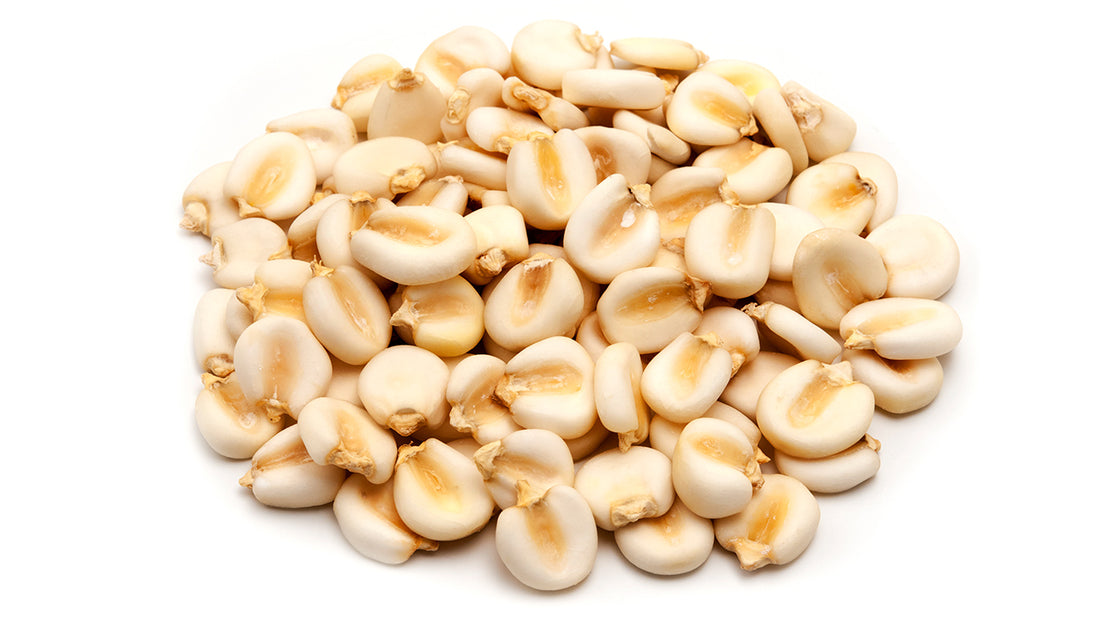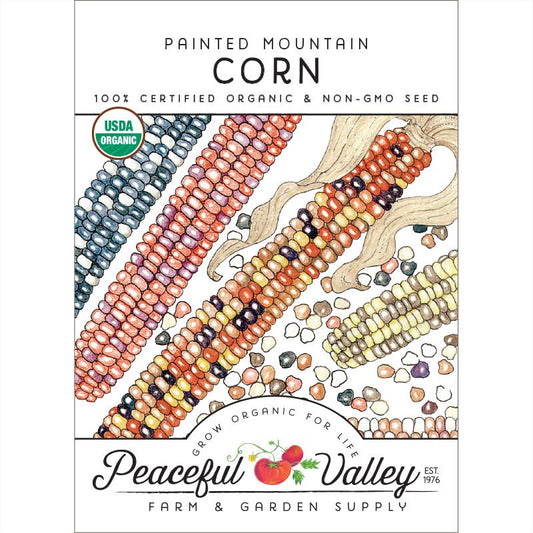To Make Lime Water
3 1/2 gallons filtered water 1 1/2 c slaked lime (calcium hydroxide or pickling lime) Use only stainless, glass or enamel, do not use aluminum pots or utensils. Bring water to a simmer and sprinkle the powdered lime and stir well to mix. Remove from heat, put the lid on and let sit for at least two hours. After sitting the calcium hydroxide separates off in the bottom (white layer). Pour off the clear liquid into another pot and now what you have is lime water. Add 6 pounds of whole kernel corn to the water. Put back on the stove, bring to a boil, then turn down to a simmer, place the lid on and allow to simmer overnight. After simmering, the kernels will swell up to about 3x their size. Pour off the liquid (will be a yellowish color) rinse the corn one to two times (or until the rinse water is clear) to remove the lime water. Refrigerate until use (good for about 1 week) or freeze for up to 3 months in a zip-lock bag. If you want to make a small batch of hominy, reduce the water to 10 cups and the pickling lime to 1/4 cup, but follow the same instructions for making it. Once you have made your lime water, add 3 cups of dry corn, bring to a boil, then let simmer overnight. A crock pot works great for making hominy.How to Use Hominy
Great southern dish is to fry the hominy in butter, salt and pepper and add some country ham to the pan. Cook until the hominy gets a little crisp on it. You can deep fry it to make corn nuts. Just heat up some canola oil and fry the hominy until golden brown. Remove from the oil and let dry on a paper towel to remove some of the oil. Season with salt or your favorite seasonings (barbecue, spicy mix…). If you don’t want to deep fry them you can also just roast them in the oven (at 400°F) coated with a little olive oil, and salt (you can also add some spices). Make your own homemade tortillas from grinding hominy into masa.
Understanding Field Corn and Its Transformation
Field corn, distinct from the sweet corn commonly enjoyed during summertime, is the base ingredient for both hominy and grits. Harvested and left to dry, this corn is used for a myriad of purposes, from animal feed to ethanol production. However, it's in the kitchen that its potential truly shines.
The Art of Making Hominy
One of the most intriguing processes involves preparing hominy, a staple deeply rooted in Southern cuisine. This transformation begins by soaking field corn in an alkaline solution, often made using wood ash or a mineral lime solution. This solution, responsible for the chemical reaction, removes the hull and germ of the corn, resulting in large, plump kernels ready for culinary adventures.
Grits: From Coarse to Fine
Grits, on the other hand, are derived from dried field corn that's been finely ground. This process involves removing the hulls and grinding the kernels into a coarse or fine texture. These versatile grains serve as an excellent base for various dishes, from breakfast to dinner.
Hominy and Grits in the Kitchen
Their adaptability in the kitchen is where hominy and grits truly shine. Grits, particularly when cooked with milk or broth, develop a creamy and comforting texture, making them an ideal side dish. They also serve as a foundation for delightful dishes like shrimp and grits or cheesy grits casserole.
Hominy, with its plump, tender kernels, finds its way into hearty soups and stews. Its texture and subtle flavor profile complement diverse cuisines, from Mexican posole to Southern hominy chili.
Exploring Hominy and Grits Recipes
The versatility of these corn-derived staples extends to their diverse recipes. Hominy recipes span across cultures, offering dishes like pozole, a Mexican soup, or hominy salad with beans and vegetables. Meanwhile, grits open doors to culinary creativity, featuring in classics like homestyle breakfasts or baked grits with cheese and herbs.
From Home to Grocery Stores
While making hominy and grits from scratch can be a rewarding culinary adventure, they're also readily available in grocery stores. These store-bought varieties offer convenience without compromising taste or quality, providing options for those seeking a quick addition to their recipes.





1 comment
Thanks for the article. I made some hominy this weekend with my organic Glass Gem corn I grew this summer. Really great tasting and can’t wait to make some Pazole. But I tried it fried with ham and it was so good.